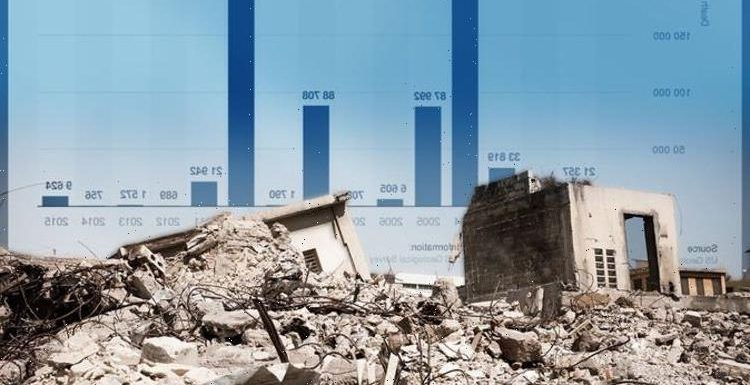
Lights flash as massive earthquake hits Mexico
We use your sign-up to provide content in ways you’ve consented to and to improve our understanding of you. This may include adverts from us and 3rd parties based on our understanding. You can unsubscribe at any time. More info
Earthquakes are among the deadliest of natural disasters in the world. Typically caused by movements in the earth’s crust, there is no way to prevent them – and more often than not, it’s almost impossible to tell exactly when they will strike.
Staggering charts compiled by Statista show just how many earthquakes take place without most of us even knowing – and the heartbreaking death tolls caused by those that hit closest to or on land.
While earthquakes occur around the globe along the various tectonic plate boundaries, a significant proportion hit around the basin of the Pacific Ocean, in what is referred to as the Ring of Fire due to the high degree of tectonic activity.
Some of the world’s most developed countries are within reach of the Ring of Fire, including Japan, Chile, the United States and New Zealand.
Subsequently, these countries lead the way in earthquake policy and science development.
READ MORE: Elon Musk claims ‘there are UFOs’ in shocking Tweet


Earthquakes happen hundreds of times a day, and most of the time we can’t feel them at all.
On average, earthquakes with a magnitude two and smaller earthquakes occur several hundred times a day worldwide.
Major earthquakes, greater than a magnitude of seven, happen more than once per month.
Great earthquakes, with a magnitude of eight and higher, occur about once a year worldwide.

The number of people killed per year by earthquakes each year varies wildly.
According to the data collected by Statista, 2004 was the deadliest year since 2000 – whereas the year 2000 only had 231 recorded deaths.
Since 2000 the world has witnessed some of the worst recorded earthquakes in history.
The earthquake that struck Haiti on January 12, 2010, remains the deadliest earthquake of the century, with an estimated 316,000 people killed.
DON’T MISS
Elon Musk claims ‘there are UFOs’ in shocking Tweet [REPORT]
Scientists taken back by deep sea creatures voyage [INSIGHT]
Ancient Babylonian tablet discovery rewrites Pythagoras’ claim [REPORT]
An earthquake with a huge 9.1 magnitude hit Indonesia in 2004, killed some 227,000 people in the quake and subsequent tsunami which spread across parts of south east Asia.
An earthquake with a magnitude of 9.0 or higher is defined as causing near or total destruction with a death toll of over 50,000, with severe damage or collapse to all buildings, as well as heavy damage and shaking extending to distant locations.
Earthquakes on this scale also produce permanent changes in ground topography.
The world’s strongest earthquake, coming in at an almost unimaginable magnitude of 9.5, struck off the coast of Chile in 1960.

Lasting for approximately 10 minutes, and killed an estimated 1,655 in the subsequent tsunami.
China has experienced the most earthquakes according to Statista’s data, with 157 recorded in the period from 1900 to 2016.
Indonesia has recorded 113 and Iran has recorded 106 since 1900.
Closer to home, Italy and Greece land in the top ten with 33 and 32 earthquakes recorded since 1900 respectively.
Source: Read Full Article